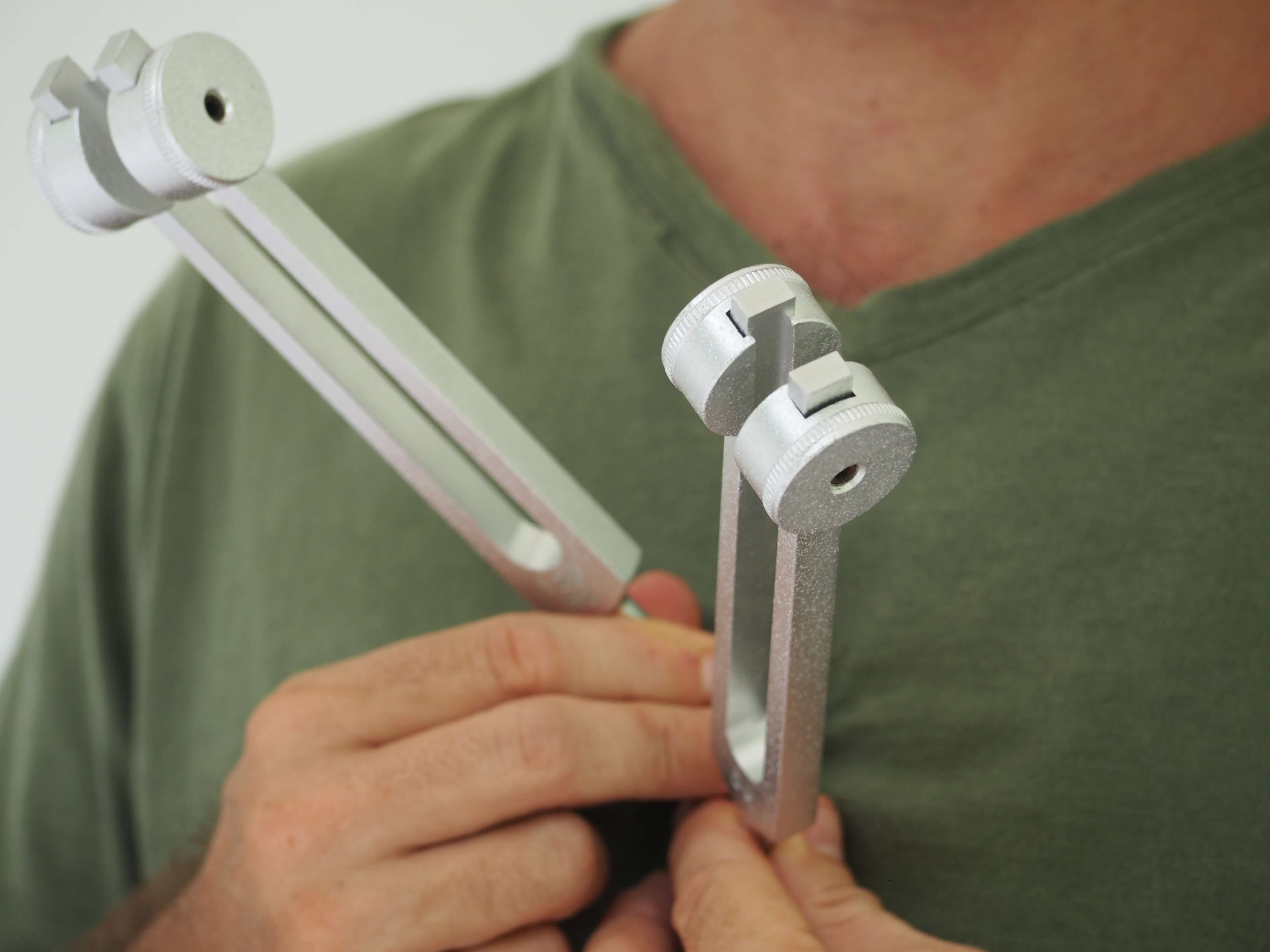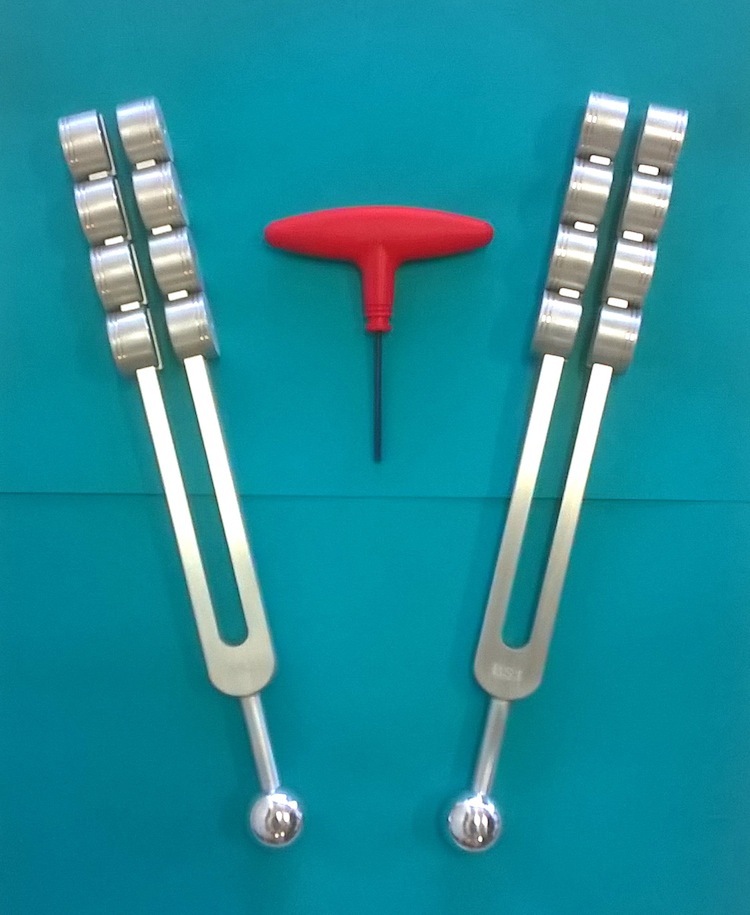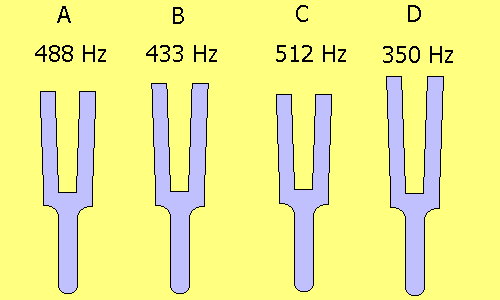
Important things to follow while using Tuning Forks This is done especially for the smaller sized Angel & Crystal Forks. You can use hard muscle such as the thigh near the knee or the firmest part of the palm for softer sounds. This is also used to generate slightly louder sounds. Recommended: by using a tuning fork activator.This method can be used for slightly louder sounds. This method is used to get the loudest sound, but be careful not to nick them. By tapping two tuning forks gently against each other.The correct place to hold it is from The Stem Handle. The Fork should not be held by the prongs as it will stop the vibration. What is the correct way of holding a Tuning Fork?
Sound tuning fork Activator#
To tone them, one could strike them on a Tuning Fork Activator or Mallet. They are lighter in weight and longer in length than the same frequency weighted fork. The unweighted tuning fork is clean at the end of each prong.  The sound does not last as long, but is sharper and more crystallized giving off wonderful overtones and harmonics.
The sound does not last as long, but is sharper and more crystallized giving off wonderful overtones and harmonics.  They are excellent to use for mental and emotional balance, improving or clearing the energy field, improving physical health and raising spiritual energy, and helping to create inner harmony and wholeness. They are normally rolled or swept around the body or by the ears. They also work very well clearing objects, a treatment room or clearing and energizing crystals. These forks work more on the subtle emotional, mental, astral, etheric and causal fields around the body aka the “aura” or “bio-field”. To tone them, one can simply tap them on the palm of the hand or use a Tuning Fork Activator or Mallet. They are heavier in weight and shorter in length than the same frequency unweighted fork. The sound lasts longer, but is softer & more diffused. They are normally placed on the body or by the ears. They are excellent to use for pain relief, reducing inflammation and inducing relaxation. These tuning forks produce a minimum of additional overtones because they emphasize the fundamentals. This is due to the round weights or resonators at the end of each prong delivering solid and deep fundamentals. One can feel the vibration stronger & deeper when the stem is placed on the body. These Forks work more on the physical or body level. What is the difference between weighted and unweighted Tuning Forks? Weighted Tuning Forks This transfers the vibration as an impulse and can be harnessed to help increase the healing energy inside us. When a tuning fork is struck, it not only vibrates the fork itself, but also the surrounding air space. Tuning forks are used for healing because of their ability to emit analog frequency vibrations. Sound healing professionals/practicioners and those interested in the finest harmonic quality may consider upgrading to our premium tuning forks designed by Randy Masters, Artist-in-Resonance. Read on to find out how a hunk of metal makes music.Our standard tuning forks are quality aluminum alloy tuning forks for use on oneself or others in a personal setting. Hit it hard or hit it soft, the note is always the same. "Playing" a tuning fork is relatively easy: Taking care not to hold it by the prongs, you slap it against something hard like a tabletop - or even the bottom of your shoe - and then listen as it rings for about 5 seconds. In 1876, Bell was able to use a battery, an electrified tuning fork and a cup of acidic water to transmit sound over an electric wire for the first time.
They are excellent to use for mental and emotional balance, improving or clearing the energy field, improving physical health and raising spiritual energy, and helping to create inner harmony and wholeness. They are normally rolled or swept around the body or by the ears. They also work very well clearing objects, a treatment room or clearing and energizing crystals. These forks work more on the subtle emotional, mental, astral, etheric and causal fields around the body aka the “aura” or “bio-field”. To tone them, one can simply tap them on the palm of the hand or use a Tuning Fork Activator or Mallet. They are heavier in weight and shorter in length than the same frequency unweighted fork. The sound lasts longer, but is softer & more diffused. They are normally placed on the body or by the ears. They are excellent to use for pain relief, reducing inflammation and inducing relaxation. These tuning forks produce a minimum of additional overtones because they emphasize the fundamentals. This is due to the round weights or resonators at the end of each prong delivering solid and deep fundamentals. One can feel the vibration stronger & deeper when the stem is placed on the body. These Forks work more on the physical or body level. What is the difference between weighted and unweighted Tuning Forks? Weighted Tuning Forks This transfers the vibration as an impulse and can be harnessed to help increase the healing energy inside us. When a tuning fork is struck, it not only vibrates the fork itself, but also the surrounding air space. Tuning forks are used for healing because of their ability to emit analog frequency vibrations. Sound healing professionals/practicioners and those interested in the finest harmonic quality may consider upgrading to our premium tuning forks designed by Randy Masters, Artist-in-Resonance. Read on to find out how a hunk of metal makes music.Our standard tuning forks are quality aluminum alloy tuning forks for use on oneself or others in a personal setting. Hit it hard or hit it soft, the note is always the same. "Playing" a tuning fork is relatively easy: Taking care not to hold it by the prongs, you slap it against something hard like a tabletop - or even the bottom of your shoe - and then listen as it rings for about 5 seconds. In 1876, Bell was able to use a battery, an electrified tuning fork and a cup of acidic water to transmit sound over an electric wire for the first time. 
Tuning forks were even behind some of telephone inventor Alexander Graham Bell's earliest experiments. Today, the $3.5-billion Yamaha Corporation has a trio of tuning forks as their logo. Young musicians were given gold-plated tuning forks upon successful completion of a conservatory exam.

In portraits, choirmasters posed while brandishing a tuning fork. In concerts, Shore jokingly referred to his invention as a "pitch fork." Shore's device quickly became the must-have tool of musicians around the world. The device was first invented in 1711 by John Shore, a trumpet player working for the British Crown.








 0 kommentar(er)
0 kommentar(er)
